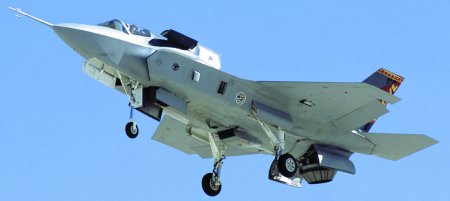Problems with interference between multiple exhaust jets on short take-off/vertical landing (STOVL) aircraft are being tackled by a three-year research project led by the UK's Cranfield University.
An early conclusion of the project - which is examining multiple exhausts for manned and unmanned STOVL vehicles - is that the problems can be mitigated by better nozzle placement and thrust control, say researchers.
The complexity of exhaust flows and their interaction with the ground and each other, can cause hovering instability. Exhaust gas re-ingestion could result in catastrophic failure. Although the concept has existed for 50 years, engineers say vertically directed jet exhaust behaviour is still poorly understood.
"This work could be applied to JSF-like aircraft and potentially to unmanned air vehicles," says Cranfield project leader Dr Alistair Saddington. "One problem yet to be solved is the re-ingestion of jet exhaust. Even with today's computers, computational fluid dynamics struggles to cope with [modelling] exhaust fluid flow."
The laboratory-based research is using high-speed digital cameras and lasers that measure exhaust velocities to understand the dynamic factors involved.
The three-year project received £60,000 ($111,000) from the UK's Engineering and Physical Sciences Research Council and has been assisted by BAE Systems. The work is due to end later this year, and Saddington hopes further grant support will allow it to continue.

Source: Flight International























